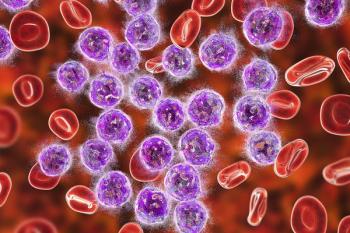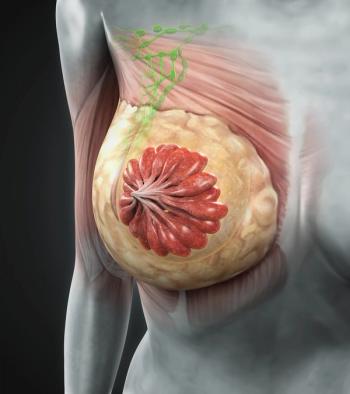
Abstract 8507
Benefit of rituximab combined to ACVBP (R-ACVBP) over ACVBP in 209 poor- risk DLBCL patients treated with up-front consolidative autotransplantation: A GELA phase II trial (LNH 2003-3)
Benefit of rituximab combined to ACVBP (R-ACVBP) over ACVBP in 209 poor- risk DLBCL patients treated with up-front consolidative autotransplantation: A GELA phase II trial (LNH 2003-3)
N. Mounier, C. Gisselbrecht, O. Fitoussi, et al
Methods: This phase II study included 209 poor-risk diffuse large B-cell lymphoma (DLBCL) patients < 60 years (median age 49) with 2 or 3 age-adjusted International Prognostic Index (IPI) factors. Of these, 58% presented with IPI 3-5 (93% with elevated LDH and 54% with extranodal sites > 1). Four cycles of an R-ACVBP regimen was given every 15 days. Complete response and partial response patients received a consolidative BEAM regimen and peripheral blood stem cell rescue.
Results: The complete response rate (CR/CRu) after induction in 176 patients was 61%, and the partial response rate (PR) was 24%, for an ORR of 85%. For the autotransplantation population (n = 175), CR/CRu was 73% and PR was 11 (84%). Three-year progression-free survival and overall survival (PFS and OS) were estimated at 76% and 81%, respectively.
A case-controlled study matching the present R-ACVBP population with ACVBP patients selected from the LNH-98-3 trial showed 3-year PFS to be higher in the R-ACVBP group than among ACVBP patients (75% vs 58%, P = .0003). Three-year OS was estimated at 78% vs 67%, respectively (P = .05). The gain in 3-year OS was significant in patients who received auto transplantation: 89% vs 77% (P = .02).
Conclusions: These results with R-ACVBP induction and consolidative autotransplantation suggest a major survival benefit. A confirmatory prospective study is needed.
Newsletter
Stay up to date on recent advances in the multidisciplinary approach to cancer.





















































































